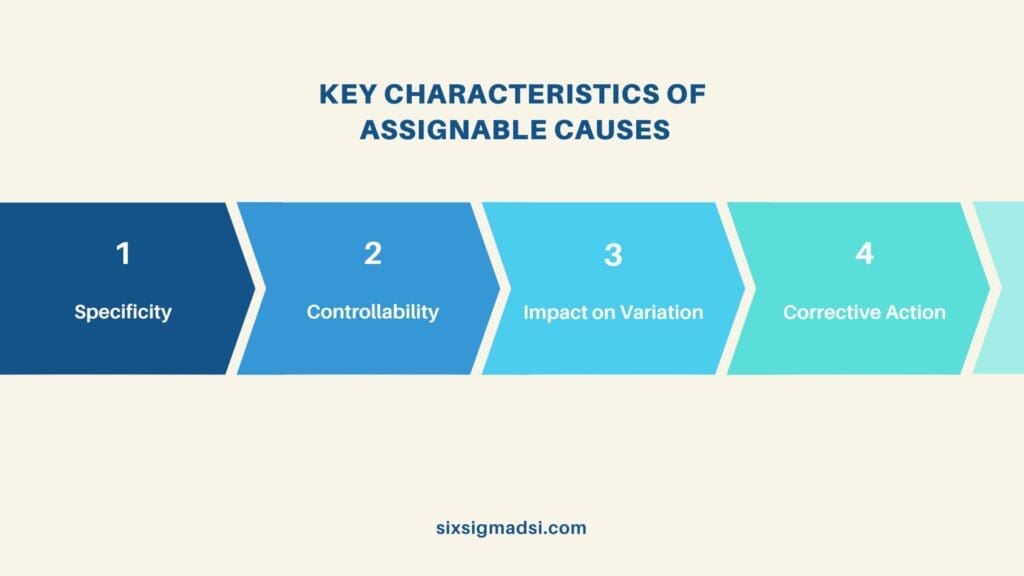Table of contents
Estimated reading time: 3 minutes
What is Assignable Cause?
An assignable cause refers to a specific, identifiable factor or reason that contributes to a variation or deviation in a process or system’s output. In statistical process control and quality management, assignable causes are distinct from random or common causes, as they are usually identifiable and controllable.
A control chart can identify one of two types of variation: assignable cause (also known as a special cause) and common cause. Let’s look at what assignable cause variation looks like and compare it to common cause variation. This article will explain how to determine your control signals, and how to respond if it does.
A control diagram shows two types of variation. Common cause variation is a random variable that results from process components or 6Ms. special cause variation can be assigned.
Key Characteristics of Assignable Causes

- Specificity: Assignable causes are particular factors or events that can be pinpointed as the reason behind a change or anomaly in the process. They are not part of the regular or expected variation within the system.
- Controllability: These causes are typically within the control of management or those overseeing the process. Once identified, efforts can be made to address or eliminate them to improve the process.
- Impact on Variation: Assignable causes have a significant impact on process variation, leading to deviations or irregularities in the output. They can result in non-conformance or substandard performance.
- Corrective Action: Recognizing and addressing them is crucial in quality management. Corrective actions are taken to eliminate or mitigate the effects of these causes to restore the process to its intended performance level.
Benefits of an Assignable Cause
The identification and management of assignable causes in a process or system offer several benefits:
- Improved Quality Control: Assignable causes pinpoint specific factors leading to variations or issues within a process. Addressing these causes allows for better control over the process, resulting in improved product or service quality.
- Enhanced Problem-Solving: Identifying it helps in understanding the root reasons behind deviations or anomalies. This facilitates more effective problem-solving and decision-making to address underlying issues, rather than merely treating symptoms.
- Preventive Action: By recognizing and eliminating them, organizations can proactively prevent the recurrence of issues. This proactive approach minimizes the likelihood of future problems, reducing waste, rework, and associated costs.
- Process Optimization: Managing assignable causes leads to process optimization. Continuous improvement efforts can focus on eliminating these causes, thereby streamlining operations, increasing efficiency, and optimizing resources.
- Increased Productivity: Addressing it can lead to smoother operations and fewer disruptions. This, in turn, can enhance productivity by reducing downtime and improving overall process flow.
- Customer Satisfaction: Consistent product or service quality resulting from the elimination of it can lead to higher customer satisfaction. Meeting or exceeding customer expectations fosters loyalty and a positive brand reputation.
- Data-Driven Decision-Making: The identification of them relies on data analysis and systematic problem-solving methods. This promotes a data-driven approach to decision-making, ensuring that actions are based on empirical evidence rather than assumptions.
Overall, effectively managing assignable causes contributes to a more robust quality management system, fosters a culture of continuous improvement, and supports the organization in delivering higher quality products or services while minimizing disruptions and costs.


















